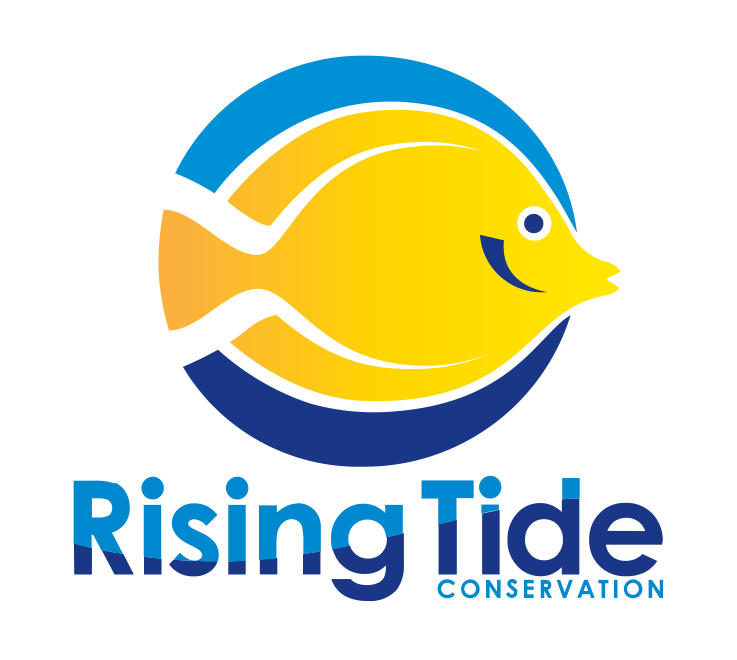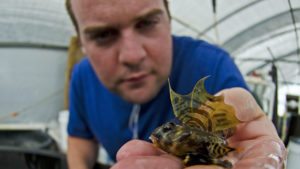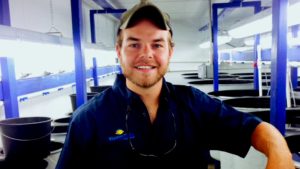How amazing it is that we are receiving shipments of coral reef fish eggs from Ohio! The AZA Conservation Endowment Fund is allowing Rising Tide an amazing opportunity to examine what species of marine fishes are spawning in public displays around the country. Our partners in this project do an incredible job harvesting, cleaning, and packing the eggs for their final destination at the University of Florida’s Tropical Aquaculture Lab. Here, the fun begins. How in the world do we know what species we are looking at? The average diameter of a marine fish egg is only 0.8 mm and looks very similar to the one next to it in the collection. Sometimes oil globule color is a good indicator and a few species have characteristic patterning on the chorion, but overall its an insurmountable task to determine what species is being delivered let alone how to best approach rearing it. After all, there is no library of fish eggs that we can look to for guidance. This is where Dr. Tom Waltzek from the University of Florida comes in. Using molecular techniques, Tom is able to tell us what species we are dealing with pretty quickly. So, each day of development we take photos of the larvae and send them to Tom for analysis. In this way we are quickly building a DNA library of early life history stages that we can use in future shipments.
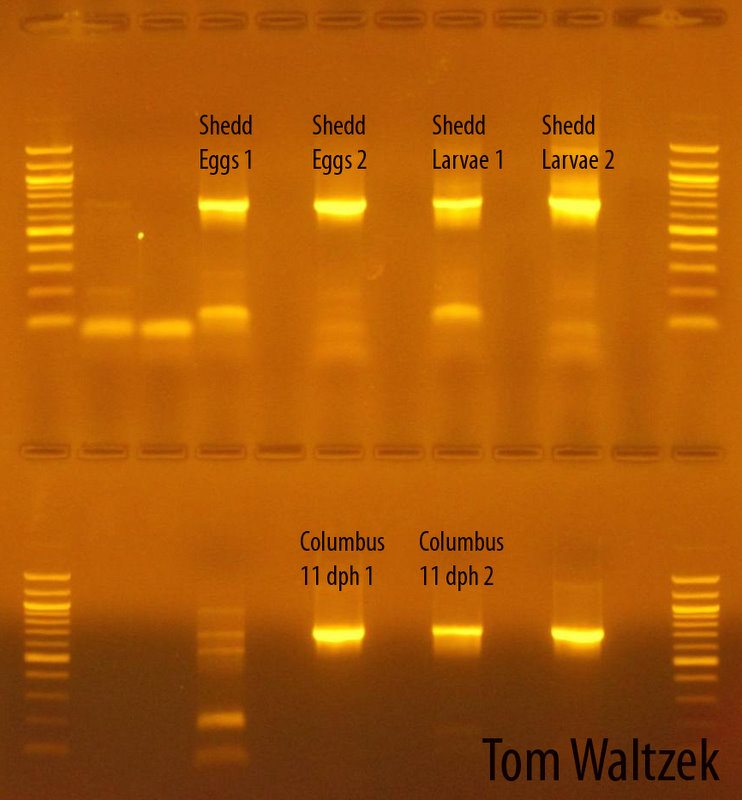
PCR reaction used for molecular identification of species spawned in collaborating institutions.
The Columbus Zoo and Aquarium in Columbus, Ohio is highly involved in this project. Paul Rinhart and Ramon Villaverde are an integral part of the success at the Tropical Aquaculture Laboratory. Paul and Ramon deploy the floating egg collectors almost daily in the Discovery Reef exhibit. Each morning they sample the collector, remove floating (viable) eggs, wash them in clean water and determine the number of eggs spawned. Many of these collections are packed and shipped. Upon arrival we sample the eggs and larvae, photograph them and preserve samples for molecular identification. Then, we stock the eggs into one of several larval rearing systems and evaluate rearing methods. Often times are we are pleasantly surprised days later with tanks full of hungry, robust larvae… and we have no idea what they are.
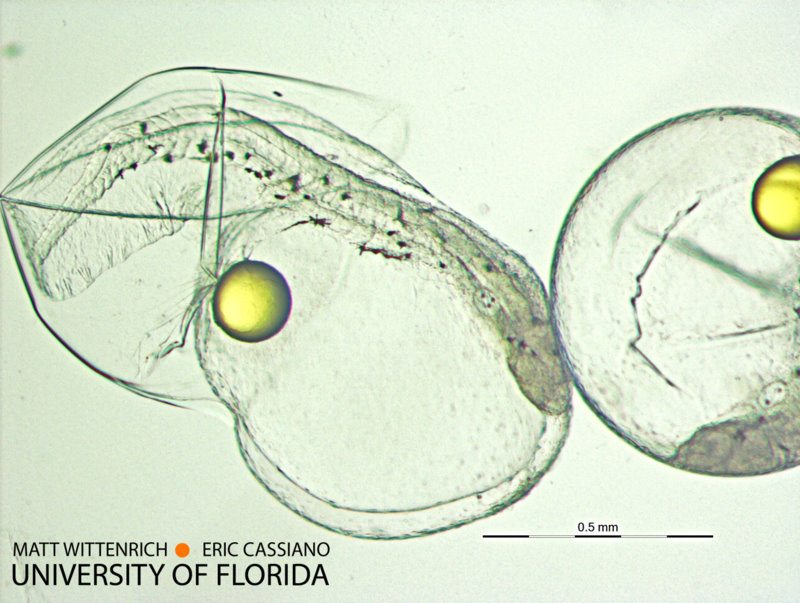
Paracanthus hepatus hatching upon arrival at the Tropical Aquaculture Lab
Last week we spotted a hundred or so pale colored larvae that were actively darting around in the brown tinted water of our rearing tanks. These larvae were actively feeding, darting and striking almost constantly. It was amazing to watch as they often tried consuming prey that was obviously too large for them. We sampled a few larvae and sent them off to Dr. Tom. A few days later the larvae reached a bottleneck and died. A day after that we found out they were regal blue tangs, Paracanthus hepatus.
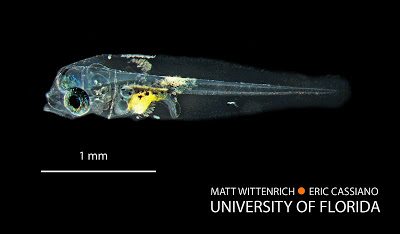
Paracanthus hepatus 9 dph
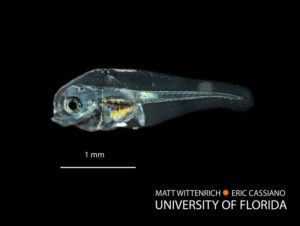
Paracanthus hepatus 9 dph
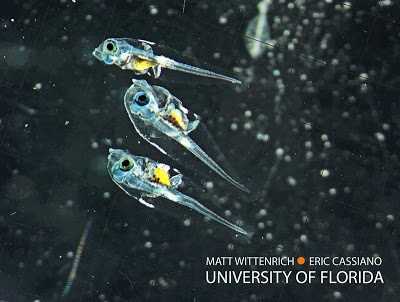
Paracanthus hepatus 11 dph. All sampled larvae exhibited full guts. Gut content analysis and zooplankton ID is currently underway.
As we become familiar with the egg and larval characteristics of each species we are getting a bit better at raising them. Each species seems to have its own requirements and as streamline identification of what is being delivered we will begin to build a clearer picture of these requirements. It is amazing to know that over 5 families of reef fishes have been identified spawning in public displays. We are sure to find more as the program continues.
Matthew L. Wittenrich
Senior Biological Scientist
Eric Cassiano
Biological Scientist
Tropical Aquaculture Laboratory | University of Florida
